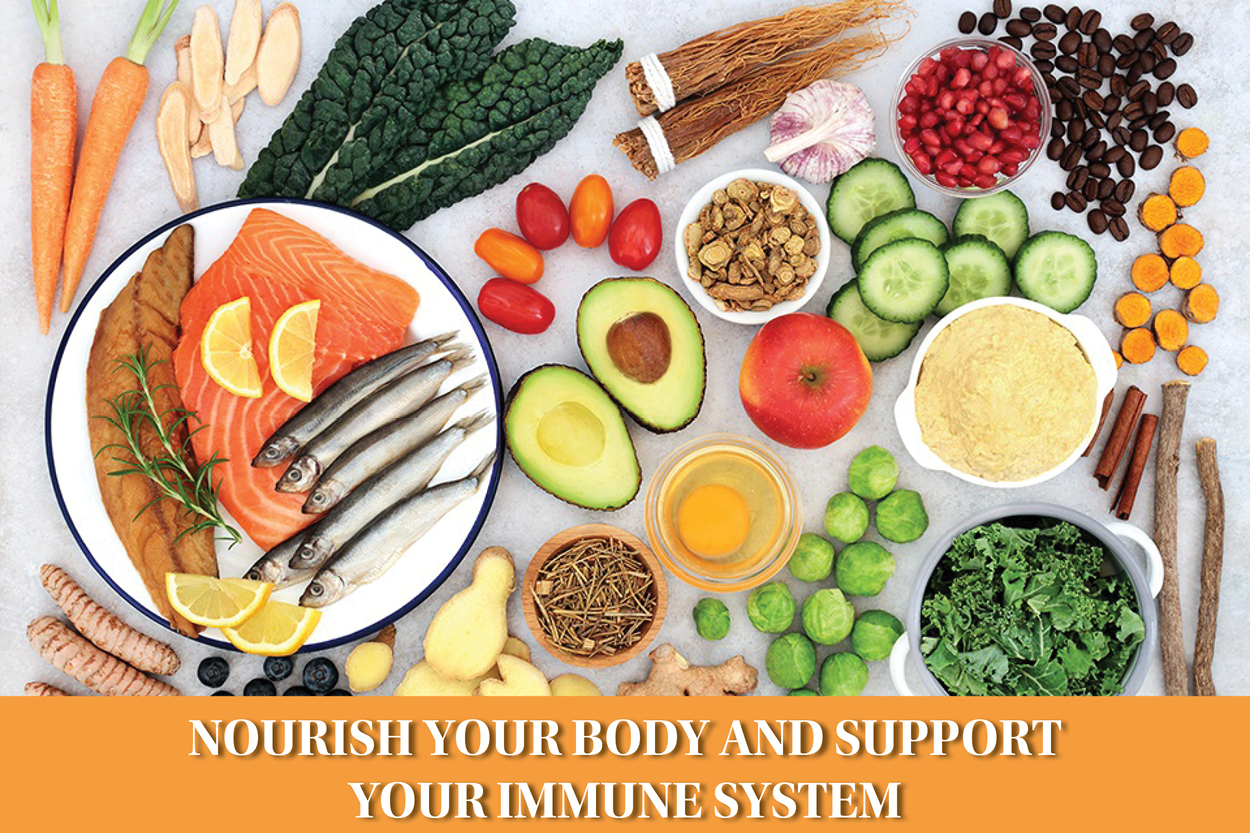You’ve heard of inflammation, but are you familiar with what causes it and what you can do to fight it? Inflammation is part of the body’s immune system response to infection, injury, allergy, swelling, and pain. It is a defense mechanism process where the immune system recognizes and removes harmful and foreign stimuli, to begin to heal your body. Inflammation can be acute or chronic, and chronic inflammation can cause chronic diseases like type 2 diabetes, cardiovascular disease, Alzheimer’s disease, and certain cancers. That’s why it’s important to eat an anti-inflammatory diet inclusive of omega-3s, vitamin C, polyphenols, and fiber-rich foods, which may help reduce inflammation in the body and your risk of various chronic diseases. Nourish your body and support your immune system with these anti-inflammatory foods and recipes.
Anti-inflammatory Foods:
- Olive oil
- Tomatoes
- Spinach,
- Kale
- Collard greens
- Swiss chard
- Beets
- Sweet potatoes
- Brussels Sprouts
- Asparagus
- Cauliflower
- Garlic
- Ginger
- Avocado
- Carrots
- Celery
- Mushrooms
- Eggplant
- Zucchini
- Strawberries
- Blueberries
- Blackberries
- Lemons
- Oranges
- Cherries
- Pineapple
- Almonds
- Walnuts
- Salmon
- Tuna
- Sardines
- Anchovies
Salmon With Citrus, Avocado, and Arugula Salad
This healthy seared salmon dish is a wonderful winter dinner option and features anti-inflammatory stars like salmon, citrus, avocado, and arugula. It’s bright and full of flavor, and will be ready in about 40 minutes.
Ingredients:
- 4 tablespoons olive oil, plus more for brushing
- 2 tablespoons freshly squeezed orange juice
- 2 teaspoons Dijon mustard
- 2 garlic cloves, minced (about 2 teaspoons)
- ¾ teaspoon kosher salt, plus more to taste
- 2 tablespoons freshly squeezed lemon juice
- ½ teaspoon black pepper, plus more to taste
- ¼ cup thinly sliced shallot (from 1 large shallot)
- 2 to 3 navel oranges, blood oranges, cara cara oranges, winter citrus of choice, or a combination of citrus (about 1½ pounds total)
- 1 small grapefruit
- 4 (6-ounce) skin-on salmon fillets
- 2 to 3 ounces baby arugula (about 4 cups)
- 1 ripe avocado, halved, pitted, peeled and thinly sliced
Tools:
- Cast iron skillet
Instructions:
- Start by making the glaze for the salmon: In a small bowl, whisk 2 tablespoons olive oil with the orange juice, mustard, half the chopped garlic and ¼ teaspoon salt. Set aside.
- Next, make the salad dressing: In a small bowl, whisk together 2 tablespoons olive oil with the lemon juice, ½ teaspoon salt and ½ teaspoon pepper. Stir in the shallots and the remaining garlic, then set aside.
- Using a small serrated knife, peel the grapefruit and oranges and trim to remove any remaining pith. Slice all the peeled fruit crosswise into thin circles (no larger than ½-inch thick); remove the seeds and set aside.
- Heat a 12-inch cast-iron or heavy stainless-steel skillet over medium-high until it’s very hot (a drop of water flicked onto the pan should turn to steam almost immediately), about 3 minutes. Meanwhile, pat the salmon fillets dry using paper towels, brush both sides with olive oil, and season all over with salt and pepper.
- When the pan is ready, cook the salmon fillets skin-side down over medium-high without moving until the salmon skin releases easily from the pan, 3 to 4 minutes. Using a pair of tongs or a spatula, wiggle the fillets to loosen the skin from the bottom of the pan, then carefully flip. Lower the heat to medium and cook until the salmon is cooked through but still slightly rare in the center, 4 to 5 more minutes, depending on the thickness of the fillets.
- Transfer to a plate or serving dish, and brush the glaze all over the salmon, making sure to coat the fillets.
- Add the arugula to a large bowl. Pour the dressing over the salad and toss well. Add the avocado and citrus, and gently toss. Transfer to a shallow serving bowl or platter and serve alongside the salmon.
Tools:
- This recipe is adapted from Lidey Heuck’s recipe
Spicy Red Lentil Dal
This nourishing and flavorful red lentil dal is packed with anti-inflammatory ginger, turmeric, garlic, and tomatoes. The cayenne adds a spicy kick, but feel free to omit this ingredient if you prefer less spiciness. It’s a cozy meal for a chilly winter day and will be ready in about 30 minutes.
Ingredients:
- 1 cup red lentils (if using green/brown, see notes)
- 4 cups water or vegetable broth
- 1 tablespoon olive oil or 1/4 cup water
- 2 medium yellow onions, diced
- 2 – 3 cloves garlic, minced
- 1 1/2 inch knob ginger (about 2 tablespoons), minced
- 4 medium tomatoes, diced or 1 can (14oz) diced tomatoes, with juices
- 1 heaping teaspoon EACH cumin, coriander + turmeric
- 1/4 teaspoon cinnamon
- 1/4 – 1/2 teaspoon cayenne pepper
- Salt, to taste
- Lemon, to serve
- Cilantro , to serve
Instructions:
- In a dutch oven or heavy flat bottom pan or pot, heat olive oil over medium heat.
- Add onions and saute until onions are soft and translucent, about 5 – 7 minutes.
- Add tomatoes, garlic and ginger, and cook for 5 minutes, or until tomatoes start to break down and soften.
- Add the spices and cook for 1 minute.
- Add the red lentils and liquids, bring to boil.
- Cover, reduce heat to low and simmer at a gentle rolling boil for 15 – 20 minutes, stirring occasionally, until lentils are tender, not mushy. Dal will thicken upon standing, add more liquids as needed.
- Let the dal cool for a few minutes so it thickens, and then it’s ready to eat. Serve alone, with rice, or on a bed of fresh greens like arugula.
- Garnish with a squeeze of lemon juice for brightness and chopped cilantro.
Notes:
- This Spicy Red Lentil Dal recipe is adapted from The Simple Veganista
- Leftovers can be stored in the refrigerator in a covered container for up to 5 – 6 days.
published: Dec. 29, 2023, 6:37 p.m.

